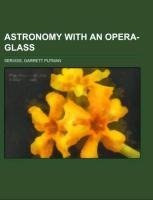
Astronomy with an Opera-glass; a popular introduction to the study of the assay heavens with the simplest of optical instruments, with maps and directions to facilitate the recognition of the constellations and the principal stars visible
Excerpt: ...and then in so short a time have disappeared, is a question as difficult as it is interesting. The easiest way to account for it, if not the most satisfactory, is to assume that it is a variable star of long period, and possessing a very wide... Viac o knihe
Produkt je dočasne nedostupný
17.42 €
bežná cena: 19.80 €
O knihe
Excerpt: ...and then in so short a time have disappeared, is a question as difficult as it is interesting. The easiest way to account for it, if not the most satisfactory, is to assume that it is a variable star of long period, and possessing a very wide range of variability. One significant fact that would seem to point to some connection between star and the nebula, after all, is that a similar occurrence was noticed in the constellation Scorpio in 1860, and to which I have previously referred (see Chapter II). In that case a faint star projected against the background of a nebula, suddenly flamed into comparatively great brilliance, and then faded again. The chances against the accidental superposition of a variable star of such extreme variability upon a known nebula occurring twice are so great that, for that reason alone, we might be justified in thinking some mysterious causal relation must in each case exist between the nebula and the star. The temptation to indulge in speculation is very great here, but it is better to wait for more light, and confess that for the present these things are inexplicable. It will be found very interesting to sweep with the glass slowly from side to side over Andromeda, gradually approaching toward Cassiopeia or Perseus. The increase in the richness of the stratum of faint stars that apparently forms the background of the sky will be clearly discernible as you approach the Milky-Way, which passes directly through Cassiopeia and Perseus. It may be remarked that the Milky-Way itself, in that splendidly rich region about Sagittarius (described in the "Stars of Summer"), is not nearly so effective an object with an opera-glass as it is above Cygnus and in the region with which we are now dealing. This seems to be owing to the smaller magnitude of its component stars in the southern part of the stream. There the background appears more truly "milky," while in the northern region the little 82 stars shine distinct, like...
- Vydavateľstvo: Books LLC, Reference Series
- Formát: Paperback
- Jazyk:
- ISBN: 9780217781176


 Anglický jazyk
Anglický jazyk 
 Nemecký jazyk
Nemecký jazyk 








